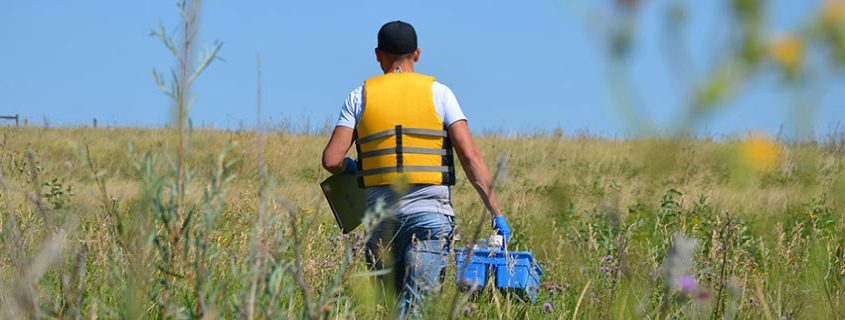Click on a practice area for details.
Environment
Core knowledge areas:
- Soil chemistry
- Soil physics
- Soil microbiology and biochemistry
- Inorganic and organic chemistry
- Surface and subsurface hydrology
- Hydrogeology
Activities:
- Assess environmental sites, including site history review
- Contaminant delineation and characterization
- Conduct risk assessments
- Develop and implement remediation plans
- Monitor soil, surface water and groundwater
- Report to regulatory authorities
Core knowledge areas:
- Vegetation ecology
- Landscape pedology
- Soil and vegetation taxonomy
Activities are often conducted along with baseline studies for environmental impact assessment
Activities:
- Field surveys for ecosite evaluation
- Soil profile classification
- Ecosite mapping
- Determine soil nutrient and moisture regimes
- Interpret aerial photographs
Multi-disciplinary in nature
Typically involves work with large teams with a broad range of expertise
Activities:
- Document baseline environmental conditions
- Assess potential project effects as well as cumulative effects on the environment
- Provide strategies on how to minimize or eliminate these effects
- Offer regulatory authorities the ability to make informed decisions about proposed industrial developments
Focuses on the development, implementation, management, monitoring and auditing of a systematic documented environmental protection system for a particular organization
Activities:
- Identify potential environmental impacts related to an organization’s day-to-day functions
- Develop environmental protection goals and objectives
- Develop and implement strategies
- Monitor compliance
- Auditing
- Training programs for staff
Involves monitoring environmental media to determine compliance with regulatory requirements associated with permitting and licensing of existing industrial, commercial, and municipal operations
Environmental monitoring may be part of baseline data collection for proposed developments – baseline data may be part of a larger environmental impact assessment
Requires education and training related to sampling of water, air and soils as part of an environmental monitoring program
Uses different kinds of monitoring equipment and sampling strategies to help ensure quality control and reliable data
Involves improving land that has been disturbed by various agricultural, industrial or municipal activities
Agrology professionals in this area:
- Understand how soil, vegetation and water interact at a landscape scale
- Aim to return land to its pre-disturbance condition
- Manage the structure and function of land, ensuring that the ecosystem is restored
Focuses on the supply, demand and allocation of natural resources within the greater economy
Involves the ways in which ecological constraints influence economic activity
Activities:
- Assess environmental impacts
- Develop policies
- Conduct feasibility studies
Core knowledge areas:
- Soil science
- Landscape pedology
- Agronomy
- Vegetation
- Ecology
Activities:
- Conduct biophysical inventories for soil salvage and conservation operations
- Develop soil replacement plans
- Develop site reclamation plans
- Prepare conservation and reclamation reports as may be required by legislation
Core knowledge areas:
- Landscape pedology
- Surficial geology
- Surface and subsurface hydrology
- Vegetation
- Ecology
Activities:
- Take biophysical inventories of soil resources for environmental baseline studies and impact assessments
- Interpret aerial photography
- Model soil and terrain relationships and documentation of these relationships for land evaluation purposes
- Determine soil sensitivity to acid deposition
- Evaluate soil and land capability for various land uses
- Provide primary data for development of conservation and reclamation plans as may be required by legislation
Core knowledge areas:
- Botany
- Vegetation ecology
Activities:
- Conduct field surveys for vascular and non-vascular plants
- Conduct rare plant surveys
- Determine mitigation plans for environmental impact assessments
- Monitor vegetation
- Assess reclaimed sites
Highly interdisciplinary in nature, requiring a biophysical, environmental, legal and socio-economic approach to watershed management
Activities:
- Administer various statutes as they relate to the allocation of water, stream alterations, protection of water supply areas
- License well drillers and other aspects of water resource management
- Address social and environmental objectives in areas such as domestic, agricultural and industrial water supply, fish and wildlife management, water- based recreation, wild and scenic river use
Learn More > See Other for areas of practice common to 2 or more sectors








